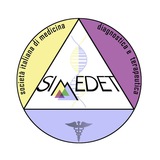Patients' perspectives on the insufficiency of #scales to rate their #pain in the ED
http://www.ajemjournal.com/article/S0735-6757(16)30575-7/abstract
...However, although nursing staff find it useful to apply a method for the objective assessment of pain, it remains unknown if patients perceive that a number on a given scale well reflects their pain.
http://www.ajemjournal.com/article/S0735-6757(16)30575-7/abstract
...However, although nursing staff find it useful to apply a method for the objective assessment of pain, it remains unknown if patients perceive that a number on a given scale well reflects their pain.
!!
A Comparison of #Suicide Risk #Scales in Predicting Repeat Suicide Attempt and Suicide: A Clinical Cohort Study
To compare the predictive accuracy of the Suicide Intent Scale (SIS), the Suicide Assessment Scale (SUAS), the Karolinska Interpersonal Violence Scale (KIVS), and the Columbia-Suicide Severity Rating Scale (C-SSRS) for suicide attempts and suicides within 3 and 12 months of an episode of self-harm.
At least 1 suicide attempt was recorded for 216 participants during follow-up, and 19 participants died by suicide. The SUAS and C-SSRS were better than chance in classifying the 114 suicide attempts occurring within the first 3 months; a C-SSRS score ≥ 27 yielded a sensitivity/specificity of 79.8%/51.5% (P < .001). During 1-year follow-up, the SUAS and C-SSRS also performed better than chance, but no cutoff on either instrument gave a sensitivity/specificity of ≥ 80%/≥ 50%. The SIS was the only instrument that could classify suicides correctly. At 3 months, the area under the curve (AUC) was 0.94 (95% CI, 0.89–0.99), and a score ≥ 21 predicted suicide with a sensitivity/specificity of 100%/81.9%, based on only 4 suicides. At 1-year follow-up, the AUC was 0.74 (95% CI, 0.61–0.87), and a score ≥ 17 predicted suicide with a sensitivity/specificity of 72.2%/57.9%.
Conclusions: Instruments that predicted nonfatal repeat suicide attempts did not predict suicide and vice versa. With the possible exception of the prediction of suicide by the SIS in a short time frame, the specificity of these instruments was low, giving them a limited relevance in the prediction of suicidal behaviors.
https://www.psychiatrist.com/JCP/article/Pages/2019/v80/18m12707.aspx
A Comparison of #Suicide Risk #Scales in Predicting Repeat Suicide Attempt and Suicide: A Clinical Cohort Study
To compare the predictive accuracy of the Suicide Intent Scale (SIS), the Suicide Assessment Scale (SUAS), the Karolinska Interpersonal Violence Scale (KIVS), and the Columbia-Suicide Severity Rating Scale (C-SSRS) for suicide attempts and suicides within 3 and 12 months of an episode of self-harm.
At least 1 suicide attempt was recorded for 216 participants during follow-up, and 19 participants died by suicide. The SUAS and C-SSRS were better than chance in classifying the 114 suicide attempts occurring within the first 3 months; a C-SSRS score ≥ 27 yielded a sensitivity/specificity of 79.8%/51.5% (P < .001). During 1-year follow-up, the SUAS and C-SSRS also performed better than chance, but no cutoff on either instrument gave a sensitivity/specificity of ≥ 80%/≥ 50%. The SIS was the only instrument that could classify suicides correctly. At 3 months, the area under the curve (AUC) was 0.94 (95% CI, 0.89–0.99), and a score ≥ 21 predicted suicide with a sensitivity/specificity of 100%/81.9%, based on only 4 suicides. At 1-year follow-up, the AUC was 0.74 (95% CI, 0.61–0.87), and a score ≥ 17 predicted suicide with a sensitivity/specificity of 72.2%/57.9%.
Conclusions: Instruments that predicted nonfatal repeat suicide attempts did not predict suicide and vice versa. With the possible exception of the prediction of suicide by the SIS in a short time frame, the specificity of these instruments was low, giving them a limited relevance in the prediction of suicidal behaviors.
https://www.psychiatrist.com/JCP/article/Pages/2019/v80/18m12707.aspx
Psychiatrist
A Comparison of Suicide Risk Scales in Predicting Repeat Suicide Attempt and Suicide: A Clinical Cohort Study|J Clin Psychiatry
Although several suicide assessment scales have been developed, their predictive properties are seldom compared. This study assessed the predictive accuracy of 4 rating scales for outcomes of suicide attempt and suicide shortly after self-harm.
